
Disconnected
installation
experience
Red Hat Marketplace:
Outcome
Delivered an MVP of the disconnected installation experience at the end of 2021.
Achieved the MVP for the disconnected installation experience in late 2021, receiving an IBM Outstanding Technical Achievement Award. Recognized for innovative technical design in shaping the RHM disconnected experience, my contributions align with IBM's commitment to operational excellence and project quality.
Team
Red Hat Marketplace
Year
2021
Role: UX Design Lead
Skills: UX, UI, IA, sketching, wireframes, rapid prototyping, and usability evaluation
Team: 1 UX Designer, 2 Researchers, 1 Project Manager, 1 Dev Architect, 3 Developers, and
1 Content Writer
Setting the stage
IBM acquired Red Hat in 2019 to upend the enterprise cloud software market. Leveraging IBM’s Enterprise Design Thinking framework, the design team created an all-in-one platform experience where customers can try, buy, and deploy container-based software on the cloud of their choosing: public, private, on-premise, and even the clouds of IBM’s own competitors.
Red Hat Marketplace (RHM)
Disconnected environments
Disconnected environments are networks isolated from other networks, usually physically and logically. That means no internet and no outside connectivity.
That’s great, but why should I care?
Disconnected environments are typical in high-security organizations, such as the military, finance, and any industry, where specific data or workloads must be kept strongly isolated from the public internet.
We must consider these environments to limit the user base that can artificially consume our Operator.
Transferring data is usually a manual process.
When attempting to support customers in disconnected environments, shipping information out to support teams for troubleshooting could take hours or days.
Challenges
We recognized a critical need for clear and effective instructions for disconnected installation in our operator experience. Many IBM Cloud Pak users operate in environments where OpenShift clusters lack public internet access. Consequently, they face significant challenges in deploying software and submitting usage data. Failing to address these environments restricts our operator's user base.
The biggest opportunity is to empower our customers to deploy the marketplace operator in disconnected environments and manually upload usage data to IBM. By providing comprehensive and precise instructions specifically designed for these disconnected settings, we can:
Expand market reach: By addressing users' needs in disconnected environments, we can attract a broader audience, including those in high-security industries such as government, finance, and healthcare.
Increase customer loyalty: Improved user experience and support for disconnected installations will lead to higher satisfaction, fostering long-term customer relationships and reducing churn.
Make our stand out from the competition by offering robust solutions for disconnected environments. This unique selling point differentiates us and provides a clear advantage in the market.
Drive revenue growth: As more organizations recognize the value of our solutions for their secure operations, resulting in new revenue streams and business opportunities.
Business opportunity
Research
I compared several disconnected installation contents from direct and indirect competitors, looking for any standardized patterns (AWS, Azure, etc.).
I engaged collaboratively with development and other teams within IBM and RHM, collectively defining how we built our technical foundation.
I collaborated with researchers to validate the needs and value of this set of instructions/steps in the Red Hat Marketplace with user interviews (12) and feedback.
Research process
Isolation and limitations: Users described working in a disconnected data center as "like working in an isolated lighthouse," cut off from all external connections, and with no access to 'yum install' or updates, making software management particularly challenging.
Ambiguity in instructions: Users often found existing documentation unclear, especially concerning 'disconnected' or 'offline' installations. Different interpretations led to confusion and errors, highlighting the need for precise terminology and detailed steps.
Resource constraints: Due to disconnected environments, users faced challenges in accessing necessary resources and tools for software deployment and management, requiring comprehensive offline toolkits and guides.
Research findings
Red Hat Marketplace serves diverse user groups, each playing a crucial role in deploying and managing software in disconnected environments.
Developers
Role: Develops and maintains enterprise software.
Needs: Rapid development and deployment on any platform and clear deployment instructions for disconnected environments.
Goals: Ensure software performance and reliability in disconnected settings.
IT Leaders
Role: Oversees IT infrastructure and ensures organizational standards.
Needs: Standardization, security, compliance, cost savings, and efficient management in disconnected environments.
Goals: Maintain system uptime, implement security policies, and ensure compliance.
Procurement and Software Asset Managers
Role: Manages software and hardware procurement.
Needs: Effective software usage, allocation management, and budget adherence.
Goals: Optimize procurement processes, manage licenses efficiently, and ensure compliance.
Software vendors
Role: Markets and sells software products.
Needs: Reach users in disconnected environments and communicate product benefits.
Goals: Ensure product compatibility, provide user-friendly documentation, and drive sales growth.
These personas guided the UX design process, ensuring that our solutions met the specific needs of users in disconnected environments.
Personas
To address the specific needs of users in disconnected environments, several critical use cases were identified, and user flows were designed to streamline their tasks:
Cluster admin installs RHM software on a disconnected cluster.
Cluster admin exports usage data from disconnected clusters.
Cluster admin uploads exported cluster usage data.
A user can view Disconnected usage data in RHM.
Users can view the documentation on RHM about the Air Gap process/tasks.
Cluster admin can view additional documentation on RHM about the disconnected cluster process/tasks.
Cluster admin can export RHM software usage data via terminal.
These user flows ensure critical tasks can be performed efficiently and effectively in disconnected environments. Clear instructions and accessible resources are provided at each step.
Use cases and user flows

User flow for use case 1

User flow for use case 2
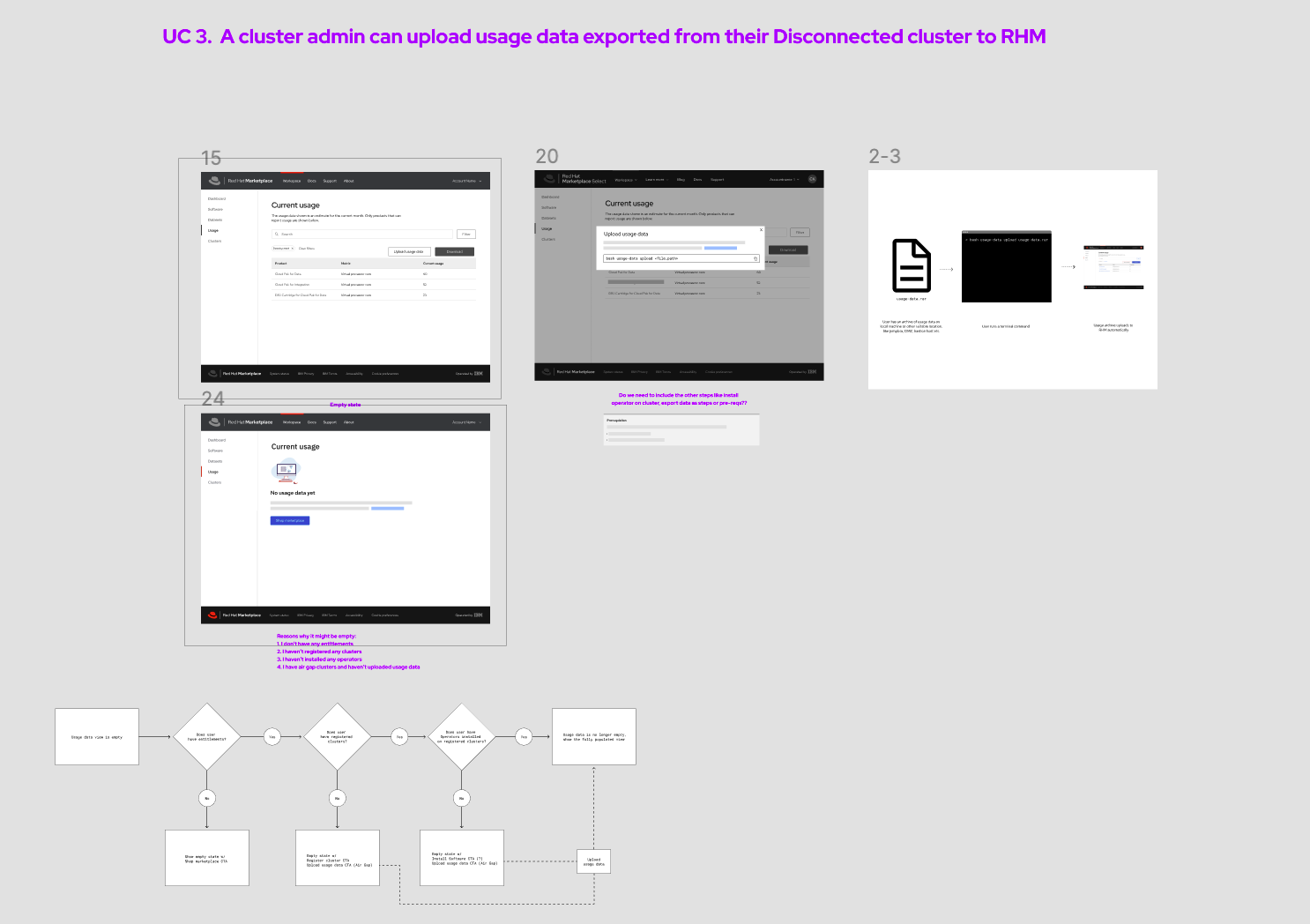
User flow for use case 3
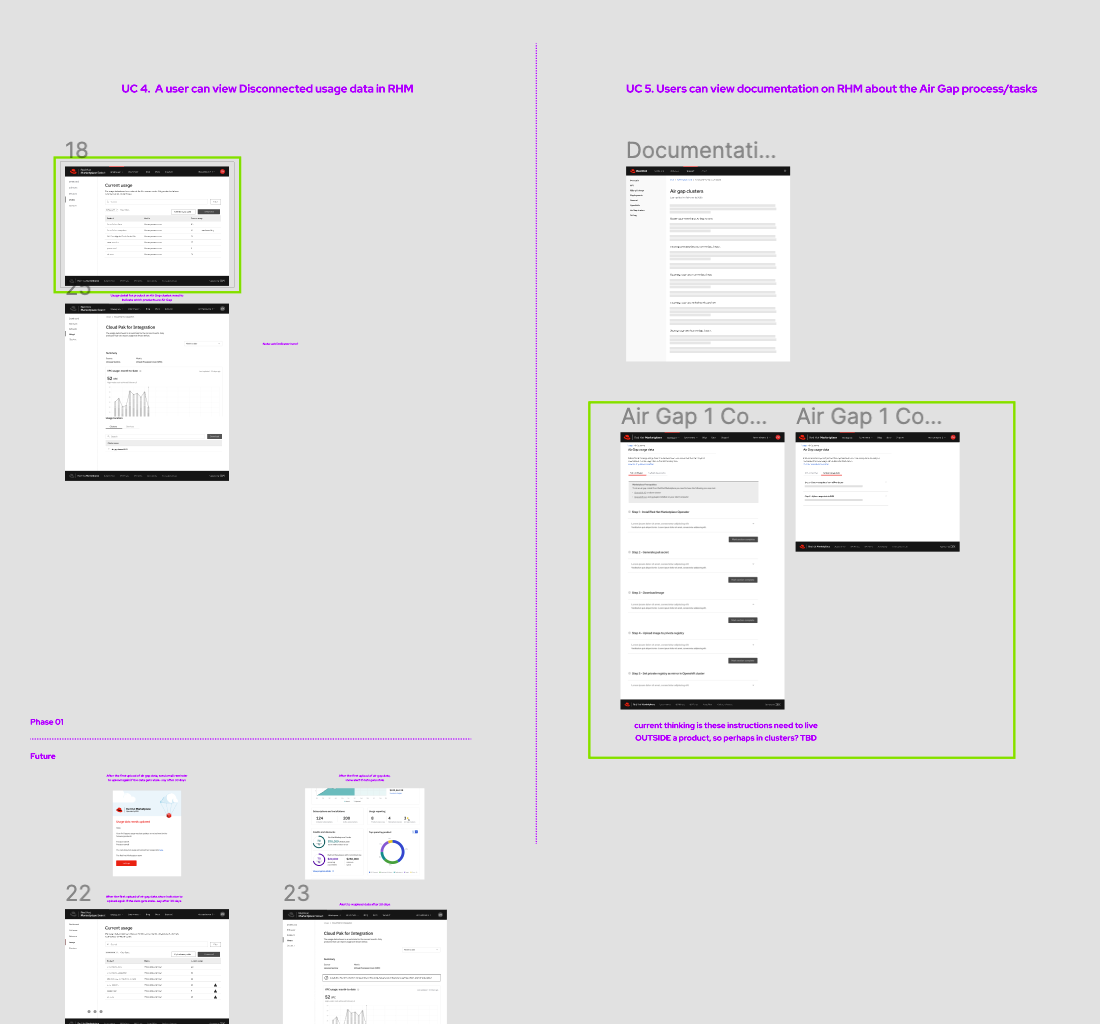
User flow for use case 4 & 5

User flow for use case 6
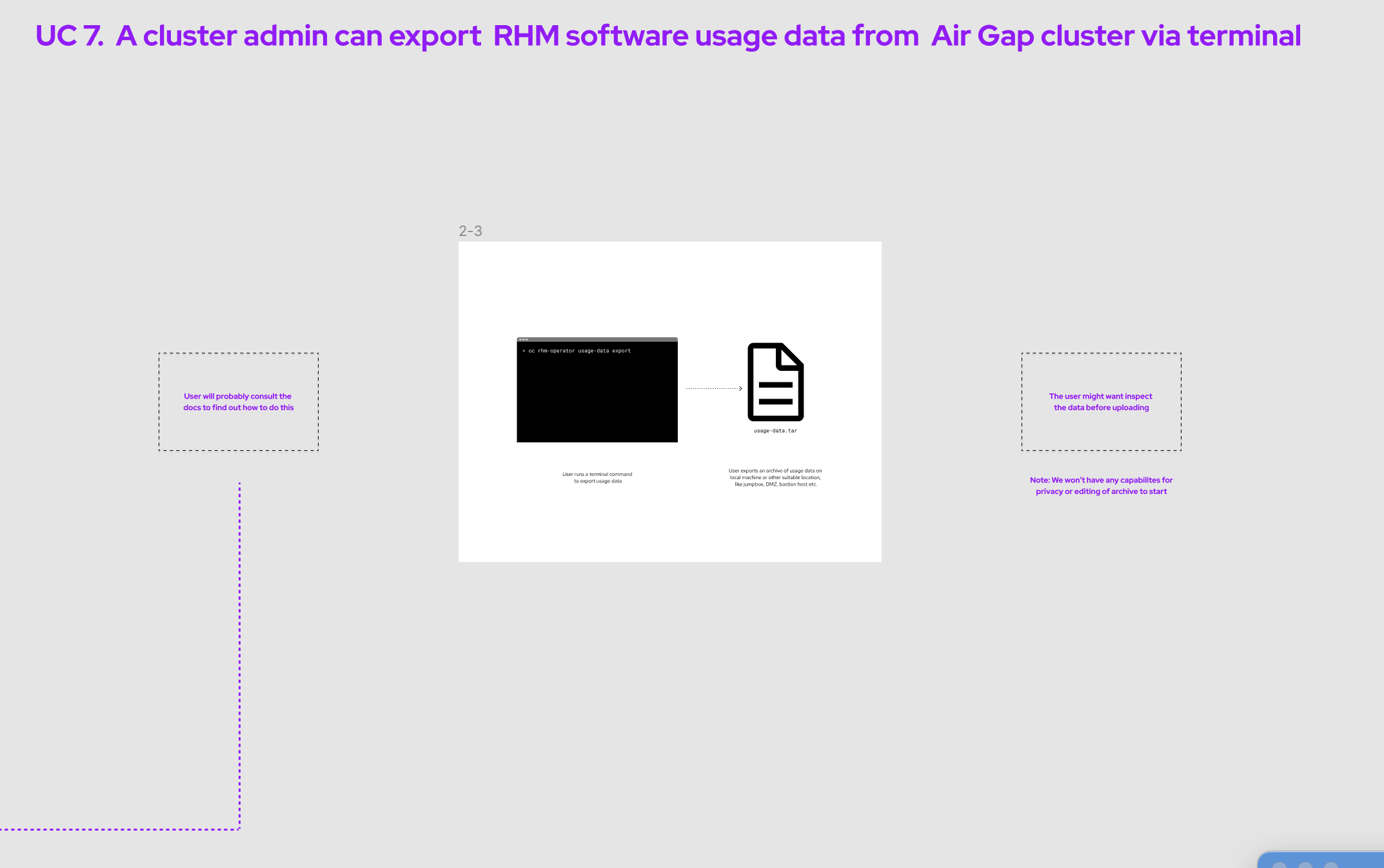
User flow for use case 7
Design solutions
Explorations
I collaborated with product managers and tech leads to create a variety of low to mid-fidelity prototypes, ensuring all features were aligned with user needs and technical requirements.
In designing deployment steps for disconnected environments, I explored different layouts and utilized flexible, modular components to accommodate diverse use cases.
Additionally, I produced comprehensive end-to-end flow documentation, incorporating insights and feedback from multiple IBM and Red Hat Marketplace teams.
Implementation
Clear and concise documentation: We developed comprehensive, step-by-step guides tailored to disconnected environments. These guides clearly defined terms like 'disconnected' and 'offline' to ensure consistent understanding.
Visual aids and infographics: We included visual aids and infographics to help users quickly grasp complex instructions and processes.
Offline toolkits: We created toolkits that could be downloaded in advance, providing all necessary resources for installation and updates without needing an internet connection.
User resting and iteration: The new materials were tested with users from the original research cohort. Feedback was gathered to iterate on the designs, ensuring they effectively met user needs.
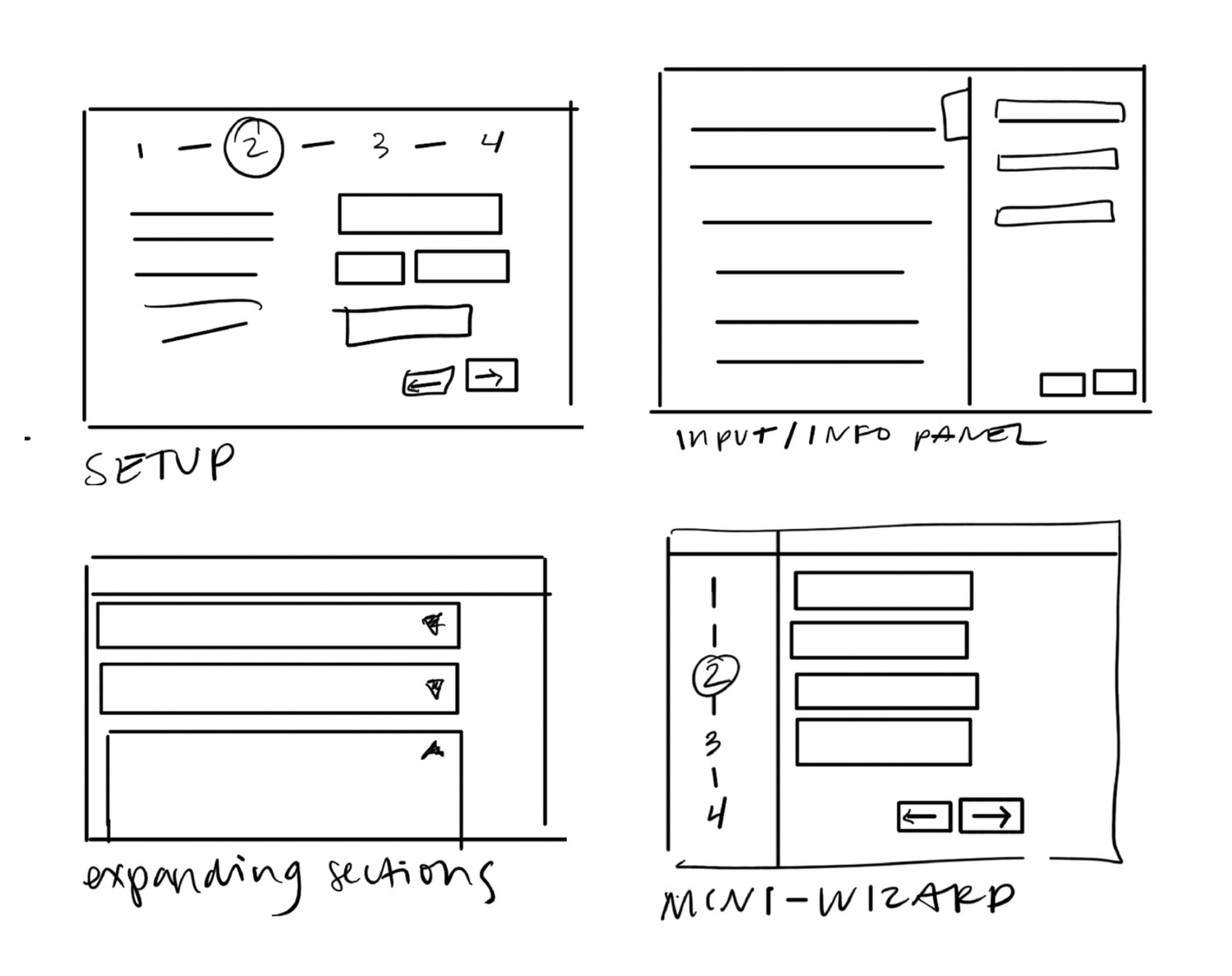
Sketches for guided layout
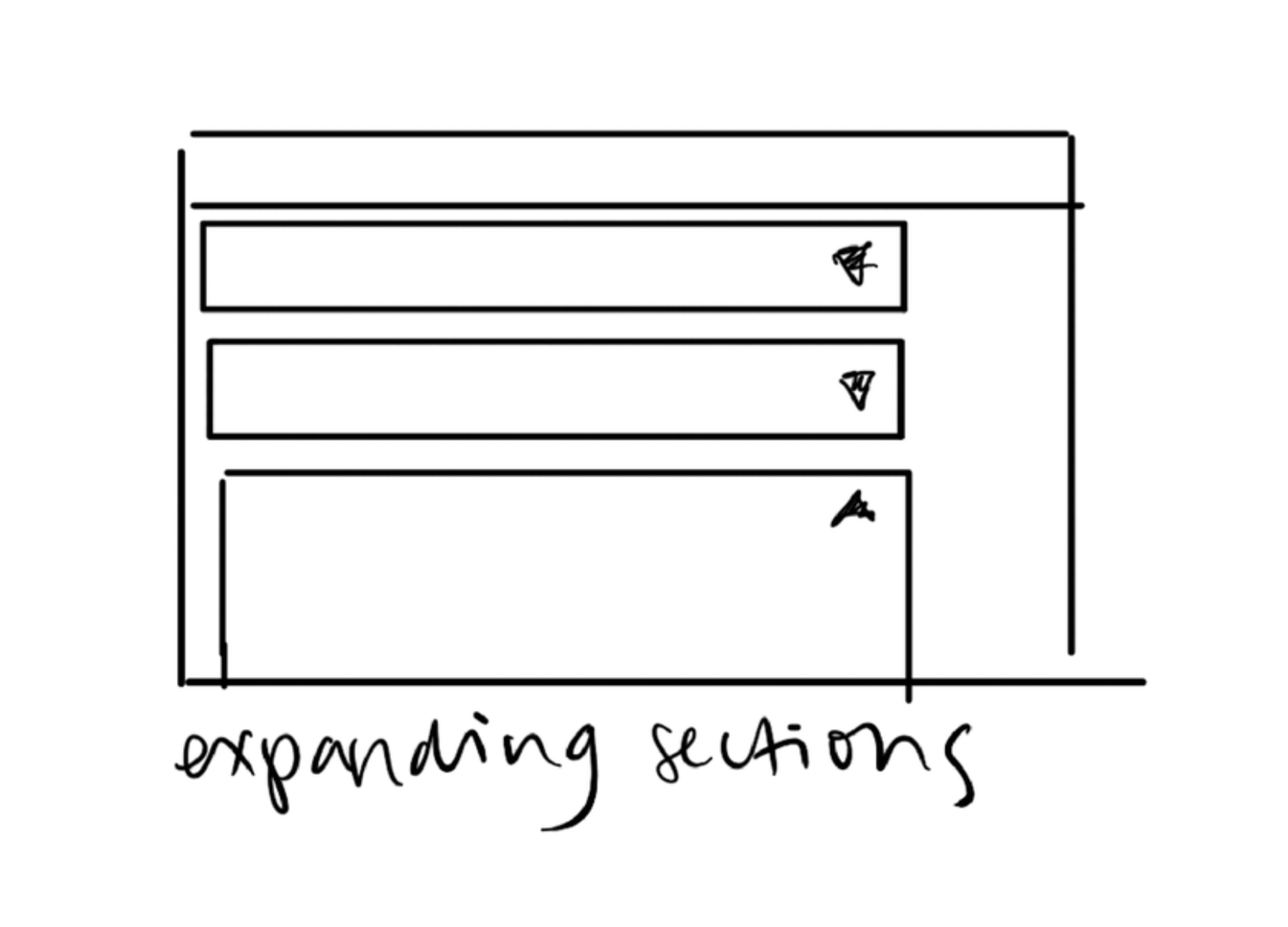
Sketch for guided layout: Expanding sections

Exploration (accordions): Lo-fi

Exploration with buttons and checkmarks
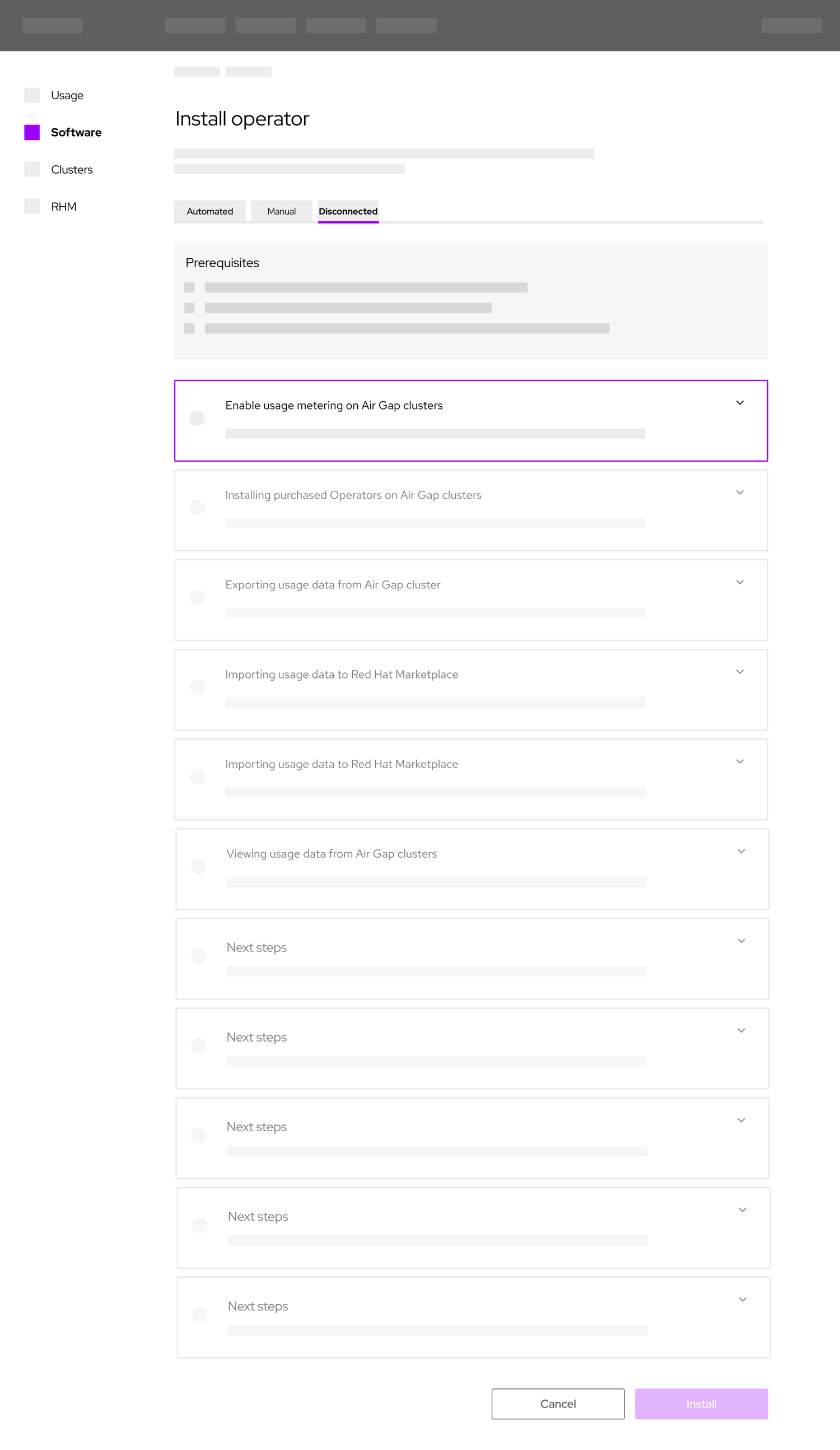
Exploration (accordions): Lo-fi

Exploration (accordions): Mid-fi

Hi-fi wireframes (expanded)

Hi-fi wireframes (closed)
Retrospective
Insights
My work on improving the user experience for disconnected environments demonstrated the critical role of user-centered design in even the most restricted settings. By focusing on users' specific needs and challenges, I was able to create solutions that not only enhanced usability but also contributed to overall productivity and satisfaction. This work underscores the importance of thorough research and iterative design in developing effective UX solutions for specialized environments, highlighting the significant business opportunities that come with addressing these unique challenges.

